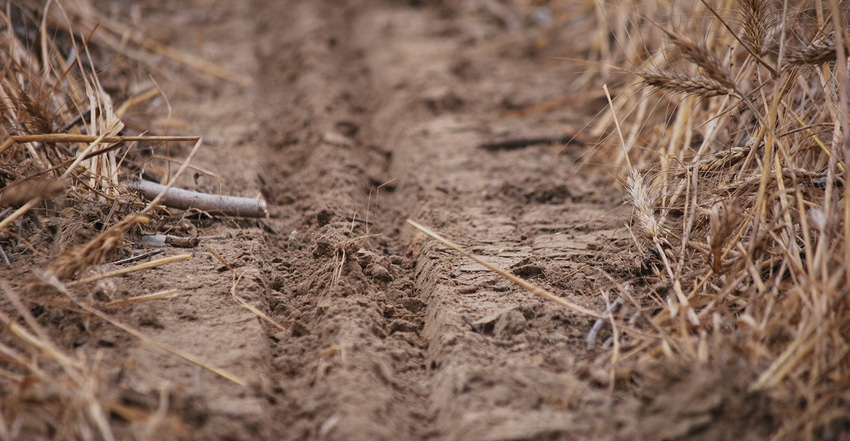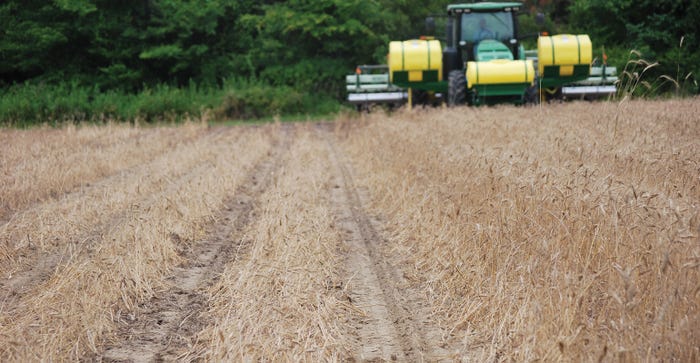November 1, 2021

Cotton, soybeans and corn are mainstay crops across the Delta, and so are diseases and nematodes, especially at planting time. Knowing which nematodes and diseases affect your crops early can give you a strong head start for the rest of the season.
Terry Kirkpatrick, former professor and Arkansas Cooperative Extension Service plant pathologist, worked in the row crop industry for 40 years. He emphasized the importance of preparing for and preventing disease and nematodes in the seedling stage.
Cotton
“There are several soil fungi that are grouped in together as far as seedling disease goes,” Kirkpatrick said. “These fungi have different symptomology, but they all have similar results. That is either a dead or weakened seedling.”
These fungi compromise the root system, but some effects can be visible above the surface as well.
“Rhizoctonia solani is more visible than others, because it shows up as little lesions on the stem right above the soil line after the seedling comes up,” Kirkpatrick said. “Pythium ultimum and Thielaviopsis basicola are both in-ground pathogens that will kill the seedling or just keep it from coming up altogether.”
Kirkpatrick noted that these fungi are most likely present in the soil. That does not mean that all hope is lost though.
“If you’ve got soil that’s ever had a crop in it, you’ve probably got a level of these pathogens present,” Kirkpatrick said. “That doesn’t necessarily mean they’re going to be a problem every year, but it does mean the potential is there.”
Nature determines whether the pathogens will be problematic, according to Kirkpatrick. It takes special circumstances.
“It’s environmentally mediated. You have to get the right weather conditions at the time of planting or shortly before or after planting for these guys to be really bad,��” Kirkpatrick said. “Then other years it may be warmer and drier, and they may not be as big of a problem.”
The ways to manage these pathogen levels and their effects vary greatly. It typically takes a combination, he explained.
“There is no genetic resistance at this time, so growers have to have several strategies to fight these fungi,” Kirkpatrick said. “One thing that usually works is planting cotton on a bed. That simply helps the soil warm up and dry out, because several of these pathogens are a problem when the soil is wet and cold.”
Another common tactic is using a fungicide to help combat the pathogens that affect seedlings.
“Other than bedding, this is the number one strategy for controlling seedling disease problems,” Kirkpatrick said. “There are really good fungicides out there, and some are for particular pathogens. Others have a broader approach, but they all try to fight the three common pathogens.”
Soybeans
A soybean crop is affected by similar and other pathogens, but this crop has a better defense system against disease.
“Generally, soybeans are more robust than cotton,” Kirkpatrick said. “Seedlings are going to pop out of the ground if you have the right conditions.”
Nematodes pose a threat for soybeans, and Kirkpatrick warned against one in particular.
“One of the biggest problems we’re seeing in Arkansas soybeans right now is the root-knot nematode,” Kirkpatrick said. “This is the same nematode that affects cotton. It has the same potential to cause damage to soybeans from germination on.”
Soybeans have an advantage against the pest that cotton does not. It is grown in a soil that root-knot nematodes do not thrive in.
“Cotton is grown in a sandier soil, because it drains well,” Kirkpatrick said. “Cotton does well in clay soils, and root-knot nematodes don’t. That’s the saving grace for soybeans when it comes to root-knot nematodes.”
Over time, the soybean crop changed in Arkansas. Farmers started planting soybeans earlier in the season, which meant they had to start planting on sandier soils.

“Some of the clay soils were just too wet to plant that early,” Kirkpatrick said. “When they started doing that, they had to use maturity group four and five soybeans. These groups were susceptible to root-knot nematodes, and they started planting in the soil that the nematodes thrived in.”
This shift in planting season and soil type propelled the root-knot nematode into having a better advantage.
“We went from not having a big issue with them to the root-knot nematode being a major player in soybeans,” Kirkpatrick said. “All of the research that was done to breed resistance to root-knot nematodes was done on maturity six and seven soybeans, but we have shifted to maturity four and five soybeans.”
Fortunately, the industry has recognized the problem that was created. Breeders are starting to respond.
“Over the last few years, there have been new earlier maturing varieties come along,” Kirkpatrick said. “Breeders are responding genetically, which is the best solution for root-knot nematodes.”
Corn
Corn is typically planted earlier than the other two crops in the cooler soils. This crop has an advantage that helps protect it against diseases and nematodes.
“Corn has a robust root system. It has a fibrous root system, so it doesn’t take long for that root system to get big,” Kirkpatrick said. “Seedling pathogens won’t affect it nearly as much as soybeans or cotton.”
While pathogens may not affect corn quite as much, nematodes still do. Kirkpatrick said he was noticing a rise in one particular nematode.
“The lesion nematode is a significant nematode in the Midwest and the transition states between the South and the Midwest,” Kirkpatrick said. “We didn’t see a lot of lesion nematodes in the past in Arkansas. All of a sudden, farmers started adding more corn acres, so we started seeing a lot more lesion nematodes.”
A lesion nematode utilizes the root system to attack the plant.

“They go through the root system and migrate through there,” Kirkpatrick said. “They hollow out the roots, which slowly kills the plant.”
Another nematode that has made its way to Arkansas is the reniform nematode. It was not present in the state until the 1980s.
“In the 80s, we knew they were in a couple of fields,” Kirkpatrick said. “All of a sudden, we had this explosion of them in cotton and soybeans.”
They don’t affect corn, which means this crop can be used as a defense mechanism for the other two.
“Corn is a non-host crop for this nematode, so it can be really effective if used in a rotation,” Kirkpatrick said. “They can be used to lower the population of reniform nematodes. If left untended, reniform can cause major damage to cotton and some damage to soybeans.”
You May Also Like




